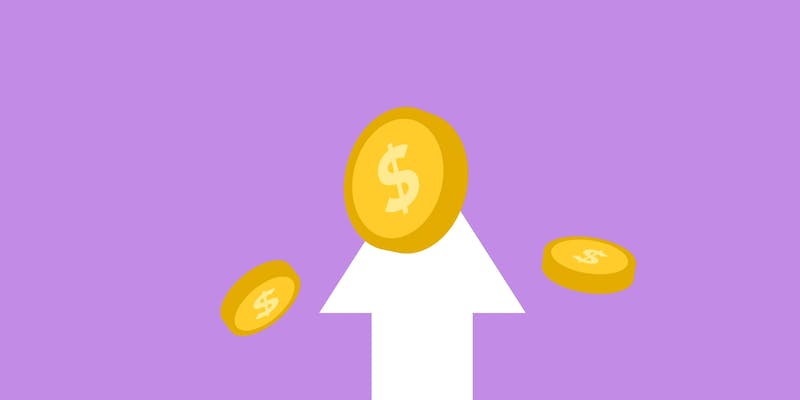How to Roll Over Your 401(K)
Sep 28, 2023 By Triston Martin
401(k)s are special accounts to save money for when we stop working and retire. In this article, we will explain why it is important to know how to move our 401(k) money, which we call rolling over. You can imagine it like moving your toys from one box to another when you want to organize them better.
In this part, we will start by giving you a simple idea of what a 401(k) is and why it is a big deal to understand how to roll it over.
What is a 401k?
401K is a retirement saving plan that is offered by many employers in the United States. It is offered as a job benefit package. Employees can dedicate a small percentage of their salary to a 401K account as a retirement saving subject to annual limitations. These savings hold a huge advantage for the savers. These funds can be invested in any firm like the Mone market, target date retirement total bond market, and many more.
What are the Different Types of 401k?
Generally, there are two basic accounts available. Traditional 401(K) account and Roth 401(K) account. The only difference you will encounter will be when you pay taxes on your contribution.
Traditional 401K
The perk of having a traditional 401K is that contributions are taken out of your paycheck before income taxes are calculated. This contribution minimizes taxable income immediately, that you have to pay. Moreover, these contributions are invested in worthy investments which grow over time. Whenever you withdraw money out of your traditional 401K account, you have to pay a very few income-tax
Roth 401(K)
Roth 401(K) accounts are preferred by beginners who just give a kick to their career. In this account type, contributions are made once the person has paid the income tax. Thus, there is no deduction for the contribution years; whenever the person withdrawals, he pays no additional tax.
Consequently, Roth 401K is the best option for the young earners as they will have lower income levels and fewer tax deductions.
Different Rollover Options For You
Rollover is a critical financial decision primarily driven by two key factors. Firstly, changing jobs often prompts individuals to consider a rollover, enabling them to consolidate their retirement savings and maintain financial clarity and efficiency. Secondly, the desire for increased control and investment flexibility motivates many to opt for a rollover, shifting funds into an Individual Retirement Account (IRA) or a new employer's 401(k).

Direct Rollover
A direct rollover method is completely tax-free. The old plan administrator directly transfers the funds to your new 401K or Individual Retirement Account (IRA). This method allows you to transfer your retirement savings without any problem, ensuring that your money grows toward your retirement goals without tax consequences.
Indirect Rollover
Indirect Rollover is an alternate method of moving retirement funds in which you receive a distribution check from your old retirement account. You get 60 days to deposit this amount in your new 401(K) or IRA.
While it offers flexibility, be cautious, as 20% of the distribution is typically suppressed for taxes. To avoid penalties and taxation, you must deposit the full distribution amount, along withheld portion, into your new account within the given time.
Eligibility Criteria for 401(k) Rollovers
When it comes to the rollover 401(K) process, some eligibility criteria and requirements need to be fulfilled to carry out smooth transactions in compliance with tax laws.
Before proceeding with your 401K rollover, you must ensure that you meet all the eligible criteria of the Internal Revenue Service. Generally, the following individuals are eligible for 401(k) rollovers:
Active Employees - Active employees who have reached the age of 59½ or have left their jobs may be eligible for a rollover.
Former Employees - If you have left your job, you are typically eligible for a rollover, regardless of age.
Beneficiaries - Beneficiaries of deceased 401K account holders can often initiate rollovers.
It's important to note that some 401(k) plans may have specific eligibility requirements or restrictions, so it's advisable to consult your plan documents or contact your plan administrator for precise details.
Easy Steps for the Rollover Process
You can follow the given steps to Rollover your 401(K) easily
Review Your Old 401(k)
Contact your old 401(k) plan administrator to gather essential details about your account, such as the current balance, investment options, and associated fees. This step ensures you know your existing retirement savings.
Open a New 401(k) or IRA Account.
Alternatively, you can open an Individual Retirement Account (IRA) with a financial institution of your choice. All your rollover funds will be collected in this account.
Initiate the Rollover
If you chose the direct Rollover, your new 401(K) or IRA upholder will provide you with the necessary paperwork to complete the transfer, but in case of an indirect Rollover, you will have to inform your old administrator about your intent to withdraw funds. Ensure you handle the funds correctly, adhering to the rules and deadlines.
Choose Investments
Once Rollover is complete, decide where you want to invest your funds. Consider your risk tolerance, long-term retirement goals, and the investment options available.

Monitor Your Investments
To see whether your investment is evolving around your financial objectives, regularly review your portfolio and make adjustments as necessary. Seek advice from financial professionals if you have any doubts.
Conclusion
If you want to save money for the future when you retire, then choosing a 401(K) plan is the best. All you need to do is understand the policies and two variable accounts, Roth 401(K) and Traditional 401(K). You can opt for any of these according to your needs and follow the simple step-by-step process for Rollover. Once you are done, you do not have to worry about your aging.





